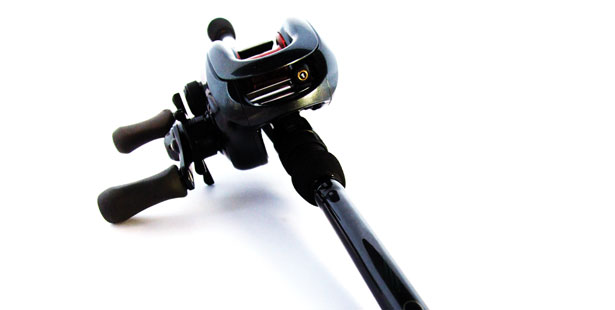
One of the biggest problems facing bass anglers is equipment let downs and failures. We tend to get so caught up in the day-to-day excitement of bass angling that we sometimes forget how we should be handling our tackle.
Here are a few suggestions that might save you some money on replacing tackle.
RODS
* When not in use store your rods upright in a cool dark place, scrub the butts and reel seats quarterly and inspect rod eyes every time you pack in boat. If your line appears to be “peeling” then ten to one you have a cracked rod eye.
* When travelling use a rod bag as this will stop eyes bashing together, then pack into your rod locker, or strap onto the boat deck.
* If you are not travelling with your boat, you can always store your rods in a rod tube. For this you require a 2,5 meter, 114 diameter PVC pipe. Glue a PVC pipe end to one end and put sponge down to that end so that rod tips and butts are protected. You then require a screw top end that also needs sponge glued in (for the same reason) glued on to your tube and you now have a hard rod protector. This system will hold 7 rods with out reels.
* While in use on the boat, set you rod straps as far away from your trolling motor as possible so that when you step back to strike that “Hog Fish” you don’t stand on your favourite rod. Also always strap your rods on the deck butt- forward as this stops the end eyes getting broken.
REELS
* Service your reels twice a year, obviously this is for the guys who use their tackle every weekend, and in some cases weekdays as well. Use an agent for this as if there is a comeback you do need some type of reliable support.
* Some guys like to dismantle their rod and reel sets after each use, but I am not one. I do believe if you fiddle with it more than you should it will break or get lost, misplaced or something of this nature.
* While strapped to the boat’s deck keep your reels covered. This is not to protect your reels, or even keep your competitors guessing as to what bait you are using, but rather to protect your line from direct sunlight.
TACKLE
Here is where we often waste money. Instead of buying the correct storage units, of which there are many, we tend to let plastics lie around the boat in the sun; the cranks all get thrown in a box together where hooks become a tangled mess.
* Plastics - Keep these in their original plastic folders and then keep them in a storage unit or plastic airtight container. The two main problems with plastics are sun light/heat, which will soften your baits drastically, and water. If your plastics have become wet in the rain, or from a bow wave over the transom, or you just fish on the Vaal and the skiers think it “normal” to pass within three crankbait lengths from your boat, dry them. When you get home remove the baits from the plastic envelope, dry the envelope, and the bait if necessary, and repack.
* Another trick is to place a car mat on the bottom of your boat hatch and quietly steal your wife’s cake cooling rack. Anything placed on top of this is kept dry while any water that does enter the hatch is below the level of the cooling rack. The car mat is only there to protect your fibreglass from being scratched and rubbed through.
* Cranks suffer from “rusted hook syndrome” if they are not packed individually so I would strongly recommend that you purchase a plastic holder to keep these as neat and tidy as possible. I must admit this also aids in finding the crank that you are looking for as quickly as possible This obviously applies to other hard baits as well.
Lastly I have found that if I keep a small soft cooler bag on the boat, I can keep the plastic that I have found to be working that day as well as the odd hard bait in there and this stops me digging in the hatches when the fish are on the bite.
I hope this has helped, and saves just a little money and a lot of time so you can stay on the water longer.
*Rob Hardy fishes under the Team Mercury/Spro banner.


 Visit us our
Visit us our